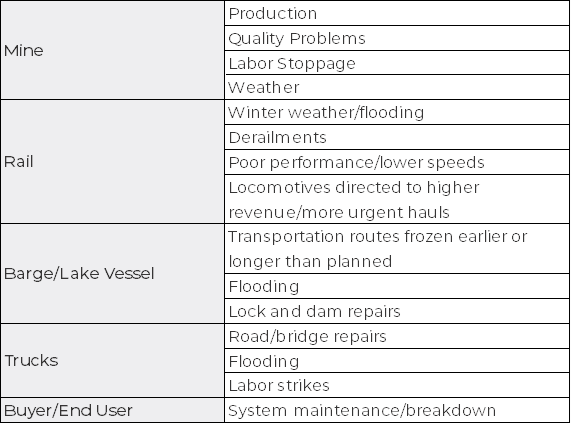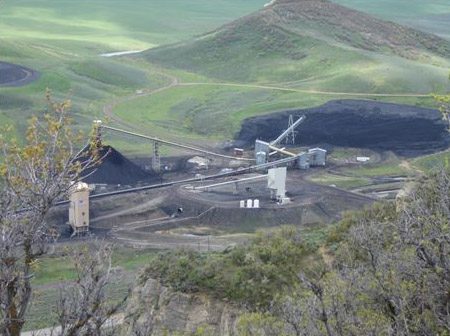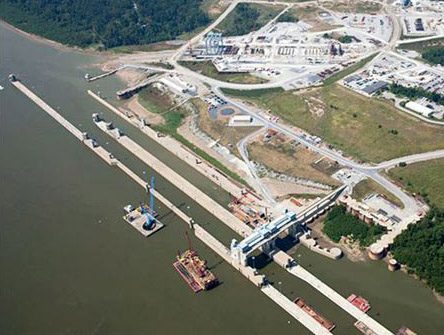Security of Your Coal Supply
By Len Dolby
Of the coal transported in the United States in 2013, approximately 92% was comprised of thermal coal used for electric power generation. The remainder was transported for industrial use or coke production.
Table 1. Methods of Transportation for Coal – USA – 2013

The performance of transportation systems are affected by many factors. Depending on the severity and duration of these issues, a point could be reached where the carrier is not able to recover and deliver the agreed upon tonnage for the year, which presents a real challenge to maintaining coal inventories at desired levels. Some common issues faced by carriers include:
Table 2. Common Issues Faced by Carriers

Issues Affecting Carriers in 2014
During the first half of 2014, several issues have impacted carriers, such as:
-
- A harsh winter rendering the shipping lanes on the Great Lakes impassable longer than normal.
- Flooding conditions along various sections of railway lines and highways.
- High water conditions on the Ohio and Mississippi Rivers.
- Poor rail performance out of the Powder River Basin due to a variety of reasons.
A number of users witnessed the depletion of the stockpiles, a few were eventually forced to reduce or curtail operations. Some had to resort to emergency measures by purchasing and transporting coal from other suppliers or from competitors likely at much higher, distressed pricing. Many coal users are still operating well below planned inventory levels as they near the completion of Q3 2014.

Major Future Concerns
Looking forward, the above issues and disruptions will continue on occasion. However, the biggest concern facing the nation’s coal transportation is the reliability of the aging lock and dam systems. Lock and dam outages have a significant impact on shipping. An example is Lock 27, the southernmost lock on the Mississippi River, which was closed for emergency repairs in September 2012 after a barge crashed into the auxiliary canal (main canal was under repairs). The impact of the stalled barge traffic was estimated at $2.7 million per day. Lock 27, with new doors, began operations approximately five months later. The majority of the lock and dam systems were installed in the 1930s with a design life of 50 years and since they have not been replaced or overhauled as required. Currently, many of the locks and dams are in dire need of major repairs or overhauls. Current funding is not adequate. Funding is collected from a $0.20/gallon diesel fuel tax (paid by the barge lines) with a matching contribution provided by the Army Corps of Engineers.

Questions to Ask Yourself
-
- How sensitive is your operation to fluctuations in inventory level?
- Do you have the option of alternative fuels or transportation methods?
- How would an unplanned disruption of supply impact your operations?
- Are there new innovative solutions that may provide more flexibility to your coal supply system in case of an emergency?
Table 3. Key Points

PEC Consulting has evaluated and advised many clients on material handling and supply issues. Our diverse industry experience and knowledge of the latest systems allow us to identify risks and present solutions to our clients. We have developed unique material handling systems which can be easily installed and relocated. In many cases, we can recommend systems employing used equipment to reduce costs. PEC Consulting can review your supply system and present reasonable and real world options to improve your security of supply.
About the Author(s)
The main contributor to this article was Len Dolby, P.E., Senior Mining Consultant at PEC Consulting Group, Saint Louis, MO.
PEC Consulting Group LLC | PENTA Engineering Corporation | St. Louis, Missouri, USA
How can we help you? Get in touch with our team of experts.
